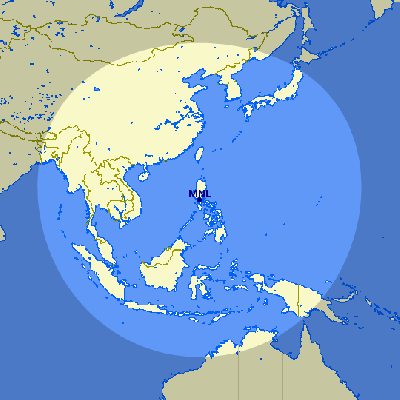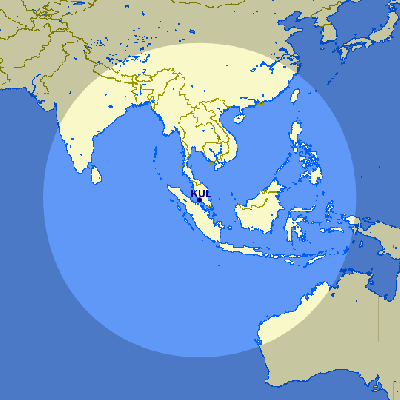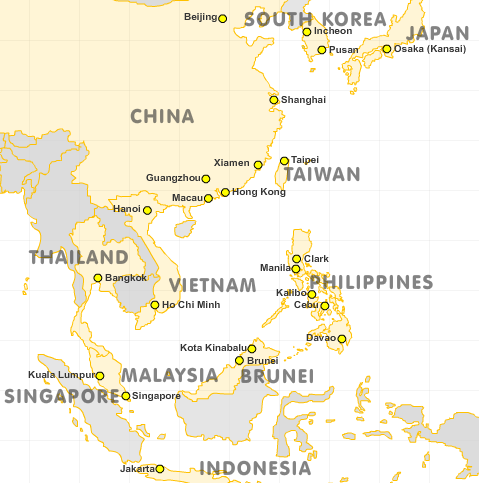February 2, 2012
SPECIAL FEATURE
 |
| Cebu Pacific President and CEO, Mr Lance Gokongwei |
The new plan from leading low-cost Filipino carrier Cebu Pacific to offer long-haul services from 3Q2013 represents not just the fourth low-cost long-haul operation in Asia, but the first time such a carrier has potential to force a full-service rival – Philippine Airlines (PAL) – out of business.
Cebu Pacific will benefit from the Philippines’
extremely price sensitive market that has seen LCCs achieve a
staggering 80% share of the domestic market and a fast-growing share of
the regional international market.
Demand for low-cost long-haul services will come primarily from the large visiting friends and relative (VFR) and migrant worker market. But Cebu’s new low-cost long-haul operation will also benefit from growing tourism and potentially the ability to transfer passengers over a geographically convenient hub if Cebu decides to stray from its original point-to-point model.
While PAL is the nation’s sole long-haul carrier, its lack of global alliance membership, relatively small domestic operation and higher cost base create low barriers for entry. National sentiment for Asia’s oldest airline may run high, but as seen in the Philippines’ domestic market, passengers vote with wallets.
Publicly-traded Cebu Pacific plans to launch its new long-haul operation in 3Q2013 with leased A330-300 aircraft. Four A330s are expected by the end of 2014 and eight aircraft by 2016. Although Cebu had not mentioned a fleet beyond eight, additional aircraft are likely, including more efficient A350s.
The decision to offer long-haul services is a swift change from remarks as recent as last year that long-haul services were not being considered. Cebu’s management team has previously insisted it wanted to stick with a very pure LCC model, ruling out a long-haul operation, a connection product and codeshares or interlines out of a fear that such distractions would add complexity and cost. The new long-haul division will have a different management team.
Demand for low-cost long-haul services will come primarily from the large visiting friends and relative (VFR) and migrant worker market. But Cebu’s new low-cost long-haul operation will also benefit from growing tourism and potentially the ability to transfer passengers over a geographically convenient hub if Cebu decides to stray from its original point-to-point model.
While PAL is the nation’s sole long-haul carrier, its lack of global alliance membership, relatively small domestic operation and higher cost base create low barriers for entry. National sentiment for Asia’s oldest airline may run high, but as seen in the Philippines’ domestic market, passengers vote with wallets.
Publicly-traded Cebu Pacific plans to launch its new long-haul operation in 3Q2013 with leased A330-300 aircraft. Four A330s are expected by the end of 2014 and eight aircraft by 2016. Although Cebu had not mentioned a fleet beyond eight, additional aircraft are likely, including more efficient A350s.
The decision to offer long-haul services is a swift change from remarks as recent as last year that long-haul services were not being considered. Cebu’s management team has previously insisted it wanted to stick with a very pure LCC model, ruling out a long-haul operation, a connection product and codeshares or interlines out of a fear that such distractions would add complexity and cost. The new long-haul division will have a different management team.
Cebu targets the 10 million Filipinos living outside Asia
Destinations, Cebu CEO Lance Gokongwei said, will focus on expatriate communities. There are about 11 million Filipinos living overseas, including about 3 million in the US and about 2.5 million in the Middle East. Only a little over one million expatriate Filipinos live in Asia, a market Cebu has targeted with its fast-growing regional international operation and has stimulated by offering low fares that allow these workers to return home much more frequently. The fact an overwhelming majority of the expatriate Filipino population lives outside Asia shows the huge potential of a low-cost long-haul operation in the Philippines.
Largest regions for overseas Filipinos: Dec-2009
| Region | Population |
|---|---|
| Africa | 64,736 |
| Americas | 3,582,879 |
| Middle East | 2,415,896 |
| North Asia and South Asia | 1,074,496 |
| Europe | 722,427 |
| Oceania | 388,520 |
| Africa | 64,736 |
Cebu will undoubtedly also attract tourism traffic and potentially some corporate traffic. Mr Gokongwei estimated Cebu’s long-haul fares will be 35% cheaper on normal tickets and 80% cheaper during special promotions.
Long-haul Cebu to be markedly different from AirAsia X, Jetstar and Scoot
Even before considering passenger composition or fares, it is clear Cebu’s long-haul division will be different from Asia's three other low-cost long-haul carriers: AirAsia X, Jetstar and Scoot, which will launch later this year. AirAsia X is based in Kuala Lumpur while Jetstar and Scoot have bases in Singapore (Jetstar also has a long-haul base in Australia). Those bases rule out narrowbody services to North Asia whereas Cebu’s Philippines base enables it to serve north and southeast Asia with its existing A320 fleet.
Cebu now has a distinct advantage over Southeast Asia’s other LCCs in this regards. Unlike most other Southeast Asian countries, from the Philippines all major Asian cities are within reach of A320s.
Four hour flying range from Asian hubs
| Manila | Kuala Lumpur |
|---|---|
 |
 |
| Country | Filipino expats |
|---|---|
| United States | 2,877,666 |
| Saudi Arabia | 1,159,003 |
| Canada | 639,686 |
| UAE | 609,704 |
| Australia | 336,140 |
| Qatar | 263,980 |
| Malaysia | 243,877 |
| Japan | 210,617 |
| United Kingdom | 200,987 |
| Hong Kong | 168,550 |
Ironically a return to Category 1 could be double edge sword for PAL.
It would allow the carrier to finally use its 777-300ERs on US routes
but would also pave the way for Cebu to enter the market. PAL actually
is footing the bill for a consultant to help raise the standards at
the Philippines aviation authority (Category 2 is not a reflection of a
carrier's safety standards but the standards of local aviation
infrastructure), which will ultimately benefit its rival.
Assuming an upgrade to Category 1, PAL will have an advantage in that its 777-300ERs will have the range to operate non-stop flights to and from California. PAL now often has to route its return flights from Los Angeles and San Francisco via Guam as its A340-300s and 747-400s lack the range to operate the route at full payload in headwind conditions. Cebu’s A330-300s will also lack the range to operate to the US mainland or Europe non-stop. The carrier would have to serve California with a one-stop product, putting it at a potential disadvantage to PAL’s planned 777-300ER operation.
Assuming an upgrade to Category 1, PAL will have an advantage in that its 777-300ERs will have the range to operate non-stop flights to and from California. PAL now often has to route its return flights from Los Angeles and San Francisco via Guam as its A340-300s and 747-400s lack the range to operate the route at full payload in headwind conditions. Cebu’s A330-300s will also lack the range to operate to the US mainland or Europe non-stop. The carrier would have to serve California with a one-stop product, putting it at a potential disadvantage to PAL’s planned 777-300ER operation.
Potential A350s could allow Cebu to eventually serve the mainland US
and Europe with non-stop flights. But if opts to wait for A350s before
serving the mainland US, PAL will enjoy several more years as the only
Filipino carrier in this lucrative and fast-growing market. This alone
could help PAL weather the storm, although it already faces stiff
challenges from LCCs in the domestic and regional international markets
and will almost certainly have new competition in the Australia market
after Cebu takes its A330s.
The FAA safety rating has also impacted Cebu in Japan, which follows FAA recommendations and has blocked Cebu’s further expansion in the country. Canada, however, has not followed the FAA and PAL’s operation to Vancouver has been unaffected. Cebu could launch to Canada if the US if off-limits initially. But the Canadian market is much smaller than the US market and Cebu could only serve Canada with a one-stop product.
PAL is already deploying its 777-300ERs on some Vancouver flights, allowing the carrier to serve this market non-stop in both directions (some of its Vancouver flights continue to Las Vegas and have to be operated with A340-300s because of the Category 2 rating). PAL is also now using its 777s on regional routes, which they are not ideal for.
Australia offers Cebu enticing option
Cebu could also deploy the A330 to Australia, a market PAL serves with A340s. PAL tried to introduce the 777 in these markets but found too much capacity was created and reverted back to A330s. Qantas also serves the Manila-Sydney market with A330s. Jetstar currently only serves Manila from Hong Kong and Singapore with A320s (with Osaka service to be added in March).
Jetstar currently does not operate its A330s to the Philippines but the prospects of Cebu launching to Sydney could persuade the Qantas Group to switch the existing Qantas mainline Sydney-Manila service to Jetstar. Jetstar could also launch Melbourne-Manila service with its A330s, providing new competition to PAL and potentially Cebu. Australia is the seventh largest source of overseas Filipinos but is also home to a savvy travelling population that has a high propensity for overseas travel and is receptive to new carriers; AirAsia X has done particularly well.
Cebu to buck trend and go with all-economy configuration
Cebu’s A330-300s will seat “just over” 400 passengers in a single-class configuration, according to Airbus. This means Cebu will seat nine-abreast in the A330 compared to the more common eight-abreast. AirAsia X also fits nine-abreast in its A330-300s, but offers two rows of 2-2-2 configured lie-flat business seats for a total of 377 seats. Even by replacing the more spacious premium seats for economy seats, Cebu will have to reduce lavatories or galleys to exceed 400 seats. The A330-300 can hold a maximum of 440 passengers.
Cebu’s decision to forgo a premium seat goes against the decisions of AirAsia X, Jetstar and Scoot. It also signals that Cebu is potentially not interested in entirely replacing PAL. While Cebu’s expansion into long-haul services complicates its model, the carrier seems to want to avoid straying into other elements of the full-service model such as business class and codeshares.
AirAsia and Jetstar have shown there is demand for a more spacious seat priced more competitively than other carriers’ premium classes. AirAsia X has found the greatest success with its premium cabin, going as far as to offer lie-flat seats whereas Jetstar and Scoot offer recliner-style seats (the two may be restricted to not offering a more superior product that would cannibalise the premium product on their full-service parent companies).
Beyond demand, a premium cabin can be justified by making better use of space. With flights typically hovering at 80% load factors, a question emerges whether to let that remaining 20% of floor space go unused or put in a new product and attract a new type of passenger, as AirAsia X did. The potential for a premium cabin on Cebu is even greater since PAL does not have as comprehensive a premium product as other full-service Asian carriers. But the Philippines also has relatively small premium market compared to other Asian countries, a factor which may persuade Cebu to stick with the intended all-economy configuration.
Cebu looks keen to stick to pure LCC model despite long-haul operation
It is unclear for now if Cebu’s decision to launch a long-haul operation represents a broader model shift for the carrier. If the carrier opts against following AirAsia X and Jetstar in offering a business class, connection product and interlining/codesharing, it would shut itself out of a potential lucrative part of the market, leaving PAL as the only Filipino carrier in that space.
PAL itself has not developed Manila into a strong international transit hub and is not a member of a global alliance but it does have a large domestic-to-international transfer business and has several codeshare partners. While the Philippines is growing as a destination in its own right, the Philippines is geographically well positioned for potential international-to-international traffic flows. For example from Australia it is more convenient as a hub to East and North Asia than Southeast Asia, which is further inland and requires some backtracking. As Australian interests continue to grow outside of Southeast Asia, Cebu is potentially well positioned to capture some of that traffic.
Cebu could also potentially connect the US with other Southeast destinations such as Singapore, Indonesia and Malaysia. In all three cases these markets are only served with a one-stop product (with the exception of SIA's all-premium service) and Cebu's fares could be extremely attractive.
Management has previously remarked the necessity of a simple model. It is hard to imagine Cebu sticking with this approach once it launches long-haul flights, where the need for feed is typically essential. Not even offering domestic to international connections, an important PAL market, is almost unfathomable. Regardless of what Cebu decides in the end, many passengers will self-connect, as more than half of AirAsia X passengers do.
Cebu Pacific route map: Feb-2012
The FAA safety rating has also impacted Cebu in Japan, which follows FAA recommendations and has blocked Cebu’s further expansion in the country. Canada, however, has not followed the FAA and PAL’s operation to Vancouver has been unaffected. Cebu could launch to Canada if the US if off-limits initially. But the Canadian market is much smaller than the US market and Cebu could only serve Canada with a one-stop product.
PAL is already deploying its 777-300ERs on some Vancouver flights, allowing the carrier to serve this market non-stop in both directions (some of its Vancouver flights continue to Las Vegas and have to be operated with A340-300s because of the Category 2 rating). PAL is also now using its 777s on regional routes, which they are not ideal for.
Australia offers Cebu enticing option
Cebu could also deploy the A330 to Australia, a market PAL serves with A340s. PAL tried to introduce the 777 in these markets but found too much capacity was created and reverted back to A330s. Qantas also serves the Manila-Sydney market with A330s. Jetstar currently only serves Manila from Hong Kong and Singapore with A320s (with Osaka service to be added in March).
Jetstar currently does not operate its A330s to the Philippines but the prospects of Cebu launching to Sydney could persuade the Qantas Group to switch the existing Qantas mainline Sydney-Manila service to Jetstar. Jetstar could also launch Melbourne-Manila service with its A330s, providing new competition to PAL and potentially Cebu. Australia is the seventh largest source of overseas Filipinos but is also home to a savvy travelling population that has a high propensity for overseas travel and is receptive to new carriers; AirAsia X has done particularly well.
Cebu to buck trend and go with all-economy configuration
Cebu’s A330-300s will seat “just over” 400 passengers in a single-class configuration, according to Airbus. This means Cebu will seat nine-abreast in the A330 compared to the more common eight-abreast. AirAsia X also fits nine-abreast in its A330-300s, but offers two rows of 2-2-2 configured lie-flat business seats for a total of 377 seats. Even by replacing the more spacious premium seats for economy seats, Cebu will have to reduce lavatories or galleys to exceed 400 seats. The A330-300 can hold a maximum of 440 passengers.
Cebu’s decision to forgo a premium seat goes against the decisions of AirAsia X, Jetstar and Scoot. It also signals that Cebu is potentially not interested in entirely replacing PAL. While Cebu’s expansion into long-haul services complicates its model, the carrier seems to want to avoid straying into other elements of the full-service model such as business class and codeshares.
AirAsia and Jetstar have shown there is demand for a more spacious seat priced more competitively than other carriers’ premium classes. AirAsia X has found the greatest success with its premium cabin, going as far as to offer lie-flat seats whereas Jetstar and Scoot offer recliner-style seats (the two may be restricted to not offering a more superior product that would cannibalise the premium product on their full-service parent companies).
Beyond demand, a premium cabin can be justified by making better use of space. With flights typically hovering at 80% load factors, a question emerges whether to let that remaining 20% of floor space go unused or put in a new product and attract a new type of passenger, as AirAsia X did. The potential for a premium cabin on Cebu is even greater since PAL does not have as comprehensive a premium product as other full-service Asian carriers. But the Philippines also has relatively small premium market compared to other Asian countries, a factor which may persuade Cebu to stick with the intended all-economy configuration.
Cebu looks keen to stick to pure LCC model despite long-haul operation
It is unclear for now if Cebu’s decision to launch a long-haul operation represents a broader model shift for the carrier. If the carrier opts against following AirAsia X and Jetstar in offering a business class, connection product and interlining/codesharing, it would shut itself out of a potential lucrative part of the market, leaving PAL as the only Filipino carrier in that space.
PAL itself has not developed Manila into a strong international transit hub and is not a member of a global alliance but it does have a large domestic-to-international transfer business and has several codeshare partners. While the Philippines is growing as a destination in its own right, the Philippines is geographically well positioned for potential international-to-international traffic flows. For example from Australia it is more convenient as a hub to East and North Asia than Southeast Asia, which is further inland and requires some backtracking. As Australian interests continue to grow outside of Southeast Asia, Cebu is potentially well positioned to capture some of that traffic.
Cebu could also potentially connect the US with other Southeast destinations such as Singapore, Indonesia and Malaysia. In all three cases these markets are only served with a one-stop product (with the exception of SIA's all-premium service) and Cebu's fares could be extremely attractive.
Management has previously remarked the necessity of a simple model. It is hard to imagine Cebu sticking with this approach once it launches long-haul flights, where the need for feed is typically essential. Not even offering domestic to international connections, an important PAL market, is almost unfathomable. Regardless of what Cebu decides in the end, many passengers will self-connect, as more than half of AirAsia X passengers do.
Cebu Pacific route map: Feb-2012


I think PAL should switched to all economy class in all of their aircraft on order to survive the competition in the future.
ReplyDeleteWe'll just have to wait and see how PR will handle 5J's growth. 5J is killing PAL as it is, together with high fuel prices. IMO, PAL is more or less screwed.
ReplyDeleteI think PAL will not switch to low cost carrier because is the Philippines Full Service Carrier and still the best and only Philippine Carrier for Long Haul Operations
ReplyDeleteWell, let see what SMC will do to make PAL a competitive airline in the future. I think in the future, Cebu Pacific will be a Full Service Airline if they are successful in Long Haul Operations. Cebu Pacific started as a small airline and making a big step as they conquer not just the Philippine market, but the Asian market as well.
ReplyDeleteThis, my friends, is PAL's death knell. Sad, but I think they had it coming. As Filipino flyers, we have been shortchanged in having just PAL as a legacy carrier. There is no palpable service difference in a domestic or regional flight between PAL and CEB. Why then should a savvy traveler pay the premium to get on a plane and be served a cracker and instant coffee?
ReplyDeleteName a legacy airline in the Southeast Asian region (besides the ones in Myanmar and Laos) that doesn't have an excellent service. Even Vietnam and Garuda Airlines have a better product than PAL. PAL has basically siphoned off too much of our money without giving us the upgraded service SIA, MAS, and THAI have been offering for years. That's charity work for an airline company that ran for far too long.
So whether CEB comes into the long haul market as a pure LCC, hybrid, or FLC, is immaterial. What will make it succeed are that:
1) it is giving cheap service for a cheap price (Filipinos don't like getting ripped off).
2) it is providing us with an alternative to PAL. Period.
If emotions were to be the decision maker, I would like for PAL to stay on and for CEB to fail, because I hate their tricky online booking system. But this is a dog eat dog world. If you can't shape up (which PAL hasn't done in a gazillion years), you have to ship out. Or in aviation's case, fly out.
what's so tricky about their online booking system?
DeleteThere are all sorts of add-ons that are pre-set or pre-checked. For someone who is in a hurry, unchecking a seat assignment that costs a hundred pesos each way, for instance, gives you more chances of "accidentally" charging yourself extra.
DeleteI assume you are a savvy traveler who has the time to read fine prints? Aren't you bothered that on one page a price quote is given and then on the subsequent ones, the price gradually increases? Why can't a price quote be made straightforward?
Well the reason why PAL is not succeeding is because of corruption, and the workers union whose only want is to have them high salary on their job irregardless on how the company will be upgraded to be more competitive as a carrier. I think the workers union of PAL is the reason why the company is slowly dying.
ReplyDeleteHopefully, once Lucio Tan sells PAL to SMC, it will become profitable again.
ReplyDelete